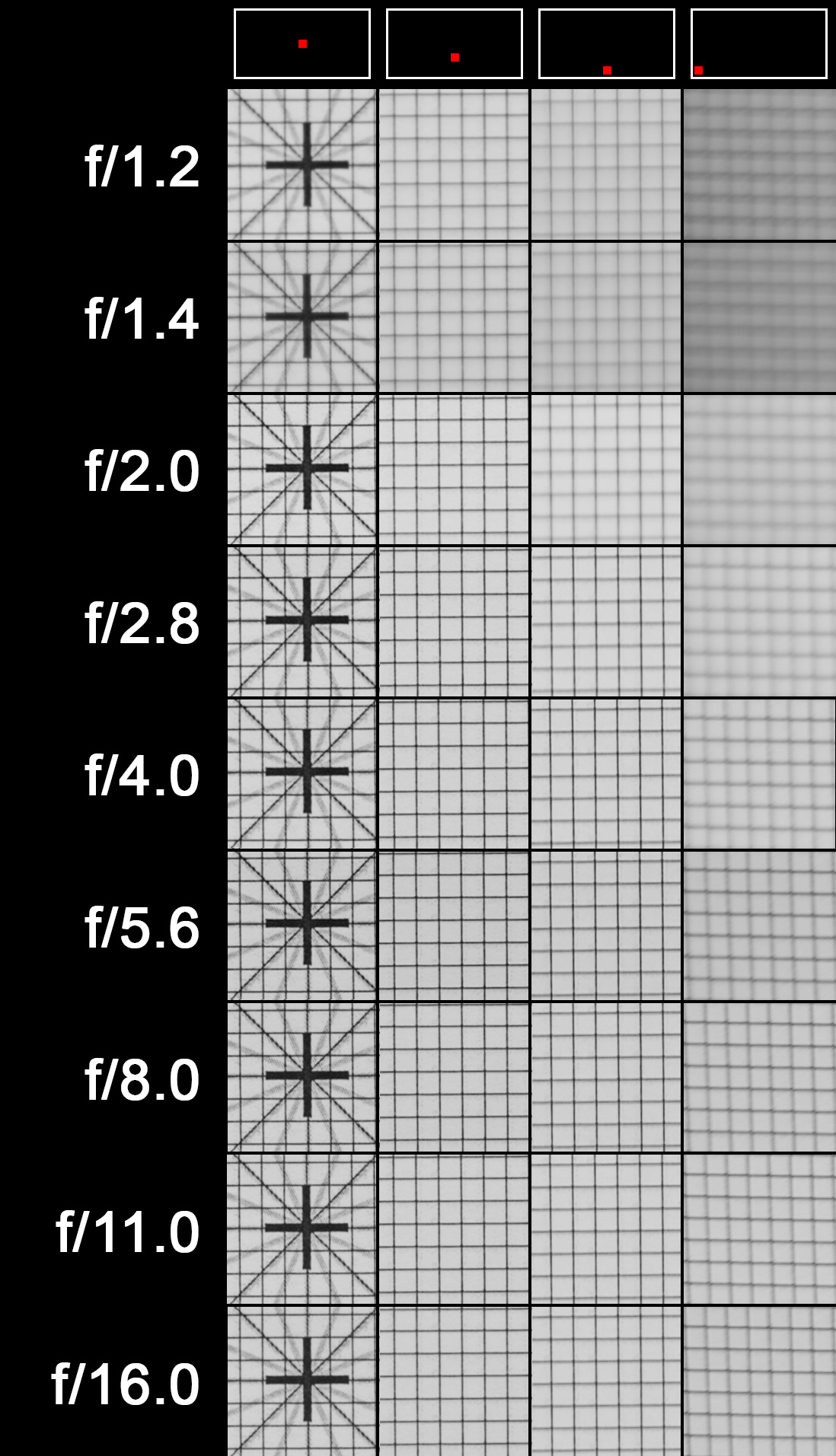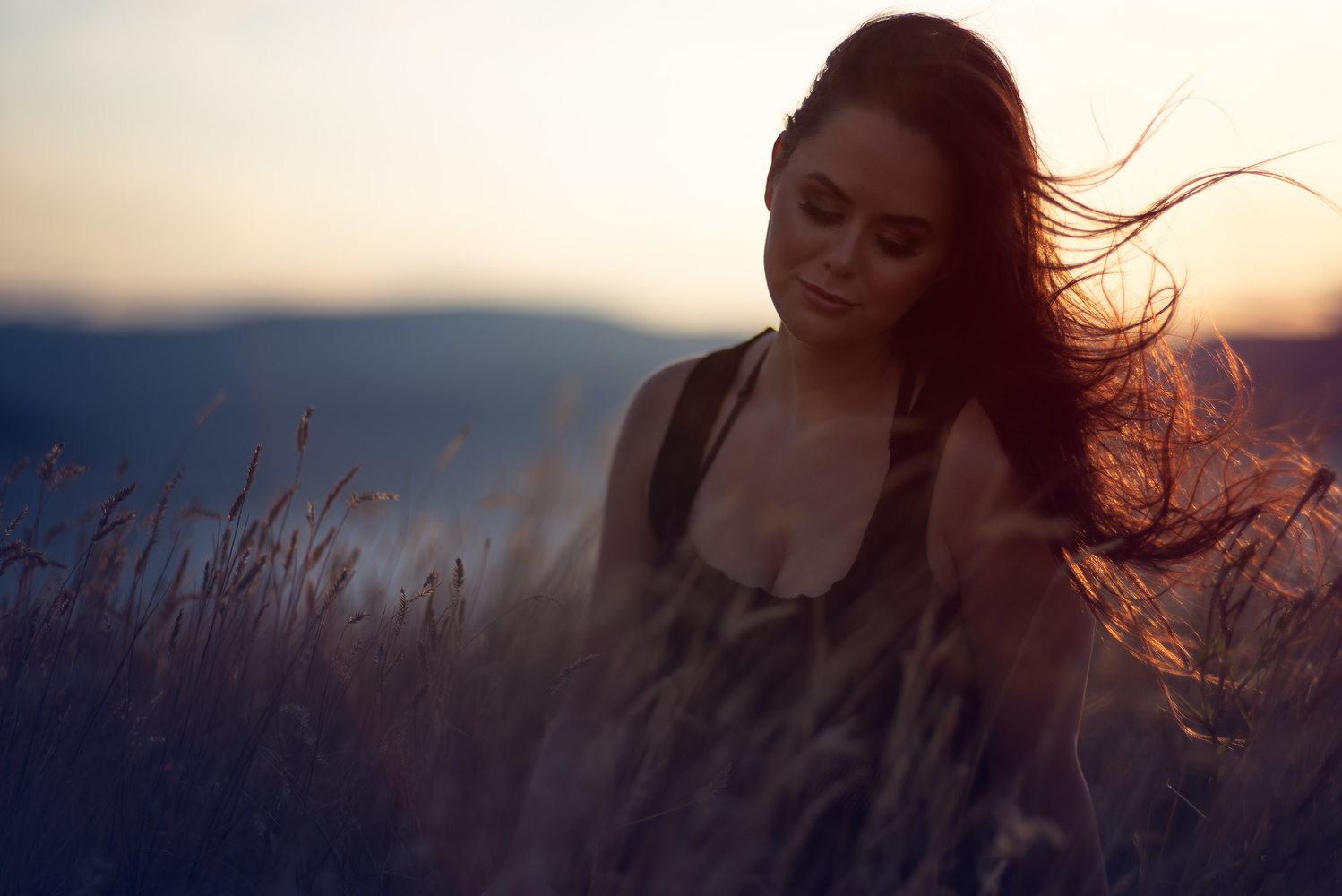The Zenitar 50mm f/1.2 S is a hodgepodge of vintage lens design brought into the modern world in order to marry the delight of swirly bokeh with the convenience of a modern lens mount.
If you happened to read my review of this lens' 85mm big brother, you would know that I have a love of how Zenit lenses render bokeh. Zenit didn't design this lens for images to be zoomed into in order to count individual, perfectly sharp dust particles floating through a jungle of nose hair. Extreme sharpness is not what this lens was designed to excel at. Zenit's lenses are built to be characterful by creating a compelling optical effect. 
Crop Factor
The specs sheet for the Zenitar 50mm f/1.2 lists it as designed for APS-C (cropped sensors) but can function on a full-frame camera with some vignetting. In testing, I found that the lens offers fairly substantial vignetting at full-frame, but when set to a 1.2 crop, the lens works great with minimal vignetting.
Sharpness
With a well-practiced technique, the Zenitar 50mm f/1.2 is sharp enough to be a capable lens in your arsenal. Compared to many modern lens formulae, however, this lens is by no means a contender in any sharpness competition. It ranges from reasonably sharp to unusably soft depending on the aperture and the region of the frame. The graphic below summarizes the Zenitar 50mm f/1.2's sharpness to give a better understanding of its performance through a variety of settings when regions of the frame are isolated at 100% zoom. As a general rule, only the center of the frame is sharp beyond f/2.0 and even then sharpness is fairly limited while the extreme corners aren't sharp at any aperture. For a more practical reference, the images throughout this article were shot at either f/1.4 or f/2.0.

Bokeh
Bokeh is the magic-sauce where the Zenitar 50mm f/1.2 is looking to set itself apart from the competition. It does not disappoint. The bokeh effect created by the Zenitar 50mm f/1.2 is a pleasant painterly smoothness coupled with the distinct swirling that made its Helios predecessors legendary. The bokeh rendering is why you buy this lens, and it impressively delivers on its promise.
Distortion
The Zenitar 50mm f/1.2 does display notable levels of distortion which contributes to the swirling bokeh effect. This distortion can be problematic when shooting portraits, mainly portraits that involve framing the subject off-center. Fortunately, to fix the distortion in post-production is quite trivial. When using Lightroom, set the manual distortion correction to +20 to ensure the distortion more or less disappears.
Color Rendering
One of my favorite aspects of the Zenitar 50mm f/1.2 is how it renders color. Patience is needed to learn how the lens reacts to certain lighting situations, but I love how many of the images look like they have a pleasing grade applied to them straight out of the camera. I wouldn't recommend the Zenitar 50mm f/1.2 for any situation that requires perfect color accuracy, but it is excellent for jobs calling for a unique blend of character and style.
Build Quality
As small lenses go, the Zenitar 50mm f/1.2 is a beast. The construction of the lens is solid metal with plenty of glass inside. Weighing in at a formidable 680g it clocks in at a weight similar to lenses twice its size. There is no questioning the durability of the Zenitar 50mm f/1.2; it seems solid enough to double as a cannonball if the need ever arises.
Both the focus ring of the Zenitar 50mm f/1.2 is beautifully crafted, offering precise smoothness along with a very reasonable focus throw. Similarly, the aperture ring provides a satisfying and accurate click for every f-stop.
Usage
The Zenitar 50mm f/1.2 is a fully manual lens that is capable of shooting at an extremely narrow depth of field. Careful patience and practice is critical to coaxing the magic from this lens. You must be willing to invest effort in learning exactly how this lens behaves in a variety of situations and then be deliberate about how you leverage it.
When shooting, you need to be keenly aware of the sharpness fall-off and be prepared to frame your subject accordingly. Being willing to place your subject in the dead center of the frame to crop for a better composition later is often the only path to a sharp image at wide apertures. I would also recommend shooting in bursts when working at a narrow depth of field to maximize the odds creating at least one sharp frame.
Price and Mount Options
The Zenitar 50mm f/1.2 is available for Canon EF and Nikon F mount. It is designed to be used on an APS-C (cropped sensor) camera but does work on full-frame bodies with vignetting. The Zenitar 50mm f/1.2 costs $449.95.
What I Liked
- Superb bokeh.
- Beautiful color rendering.
- Fantastic build quality.
- Excellent value.
What I Didn't Like
- Mediocre sharpness.
- Heavy for its size.
The Bottom Line
The Zenit 50mm f/1.2 S is a niche lens that performs best in comparatively niche situations. Anyone who is after a clinically sharp lens that excels at rendering extremely sharp images no matter what setting will want to look towards different glass to suit their needs. For those who are constantly hunting for lenses that render a distinct, characterful look to the table, the Zenit 50mm f/1.2 S is a beautiful contender that offers an exquisite style.










I love the bigger 85mm version in the Helios lineup. It really is magical. I love the 3rd photo. Pure ethereal magic. :)
Yeah, the 85mm Helios is one of my favourite lenses. :) Fantastic piece of glass.
(and thanks :))
Buy a good lens and a UV filter for the same price. Bury the UV filter underground for a month. Then, when you want this effect, dig it up and attach to the good lens. When you want images to look good again take it off. Best of both worlds.
Somehow I doubt your technique will render the distinct bokeh people are looking for when they buy these lenses...
That's exactly what I want !!!.....but damn I don't have the money right now :(
Is it possible to have a similar look with an older lens??
Yes, the Helios 81-N or the Helios 44. (44-1 and 44-4 were the best generations imo) Both are 58mm f/2.0 lenses from the 80s. They create similar bokeh though dont have as narrow of a depth of field. The upside, though, is that they can be had on ebay for less than $100.
Wow. Wasn't there any way to get some light into the model's face? If you want the hair lit up by the setting sun, maybe a reflector or flash would help with the exposure?
It's called artistic interpretation. Maybe it was his intention to do it this way?
It was done on purpose. She is lit by a reflector (or she would be a silhouette) but I chose to feather it to keep her fairly dark to achieve the mood/style I was looking for.